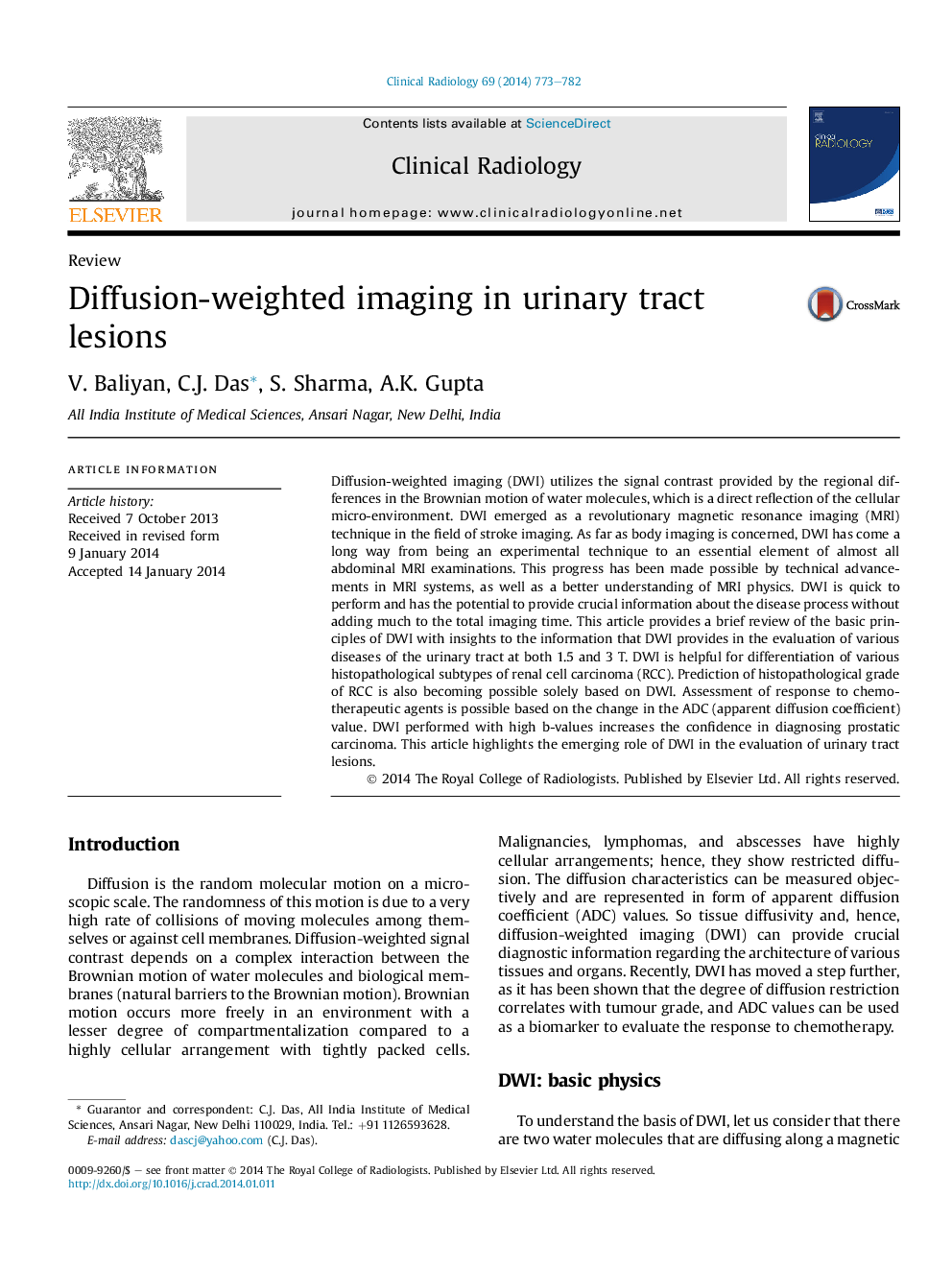| Article ID | Journal | Published Year | Pages | File Type |
|---|---|---|---|---|
| 3982114 | Clinical Radiology | 2014 | 10 Pages |
Diffusion-weighted imaging (DWI) utilizes the signal contrast provided by the regional differences in the Brownian motion of water molecules, which is a direct reflection of the cellular micro-environment. DWI emerged as a revolutionary magnetic resonance imaging (MRI) technique in the field of stroke imaging. As far as body imaging is concerned, DWI has come a long way from being an experimental technique to an essential element of almost all abdominal MRI examinations. This progress has been made possible by technical advancements in MRI systems, as well as a better understanding of MRI physics. DWI is quick to perform and has the potential to provide crucial information about the disease process without adding much to the total imaging time. This article provides a brief review of the basic principles of DWI with insights to the information that DWI provides in the evaluation of various diseases of the urinary tract at both 1.5 and 3 T. DWI is helpful for differentiation of various histopathological subtypes of renal cell carcinoma (RCC). Prediction of histopathological grade of RCC is also becoming possible solely based on DWI. Assessment of response to chemotherapeutic agents is possible based on the change in the ADC (apparent diffusion coefficient) value. DWI performed with high b-values increases the confidence in diagnosing prostatic carcinoma. This article highlights the emerging role of DWI in the evaluation of urinary tract lesions.
